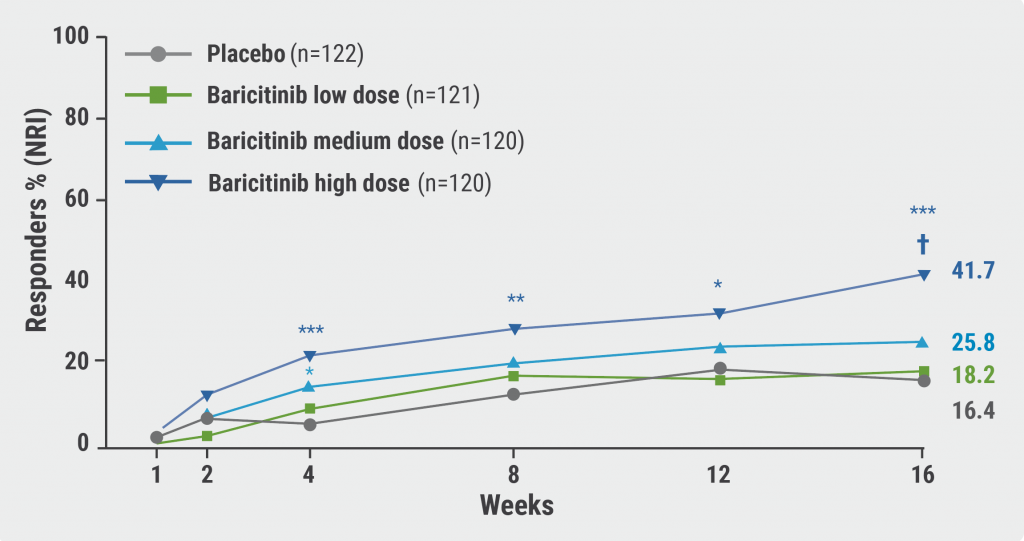https://doi.org/10.55788/e3b92f88
Current data on the skin cancer risk in vitiligo patients is not consistent in its results. “There has been a big lack of, particularly European, population-based studies,” Dr John Ferguson (St John’s Institute of Dermatology, UK) pointed out [1]. To clarify the question, the British investigator team performed a matched retrospective cohort study utilising data from the Optimum Patient Care Research Database (opcrd.co.uk) which contains medical care records from about 10 million UK patients. They matched 60,615 controls to 15,156 patients with vitiligo according to e.g. age, sex, and ethnicity. The participants were registered in the database between 2010 and 2020. A composite of melanoma and non-melanoma skin cancer occurrence was the primary endpoint. Secondary outcomes were individual cancer forms like melanoma, squamous cell carcinoma (SCC), and basal cell carcinoma (BCC).
The characteristics of the study cohort included a median age of 47 and an average follow-up of about 8 years in a study population with 54.5% women. “Around 70% of participants were White, which is slightly lower than the UK population, which kind of makes sense given this condition particularly affects people with darker skin prototypes,” Dr Ferguson told.
The results demonstrated a 10-year cumulative skin cancer incidence of 1.3% in vitiligo patients compared with 2% in controls. The adjusted hazard ratio (aHR) of 0.62 (95% CI 0.52-0.75) stood for a 38% reduction in risk for any kind of skin cancer (see Figure). Hazard ratios were also significant for the individual cancer types: melanoma aHR 0.39 (P<0.001), SCC aHR 0.67(P<0.01), BCC aHR 0.65 (P<0.001). Concerning actinic keratosis, however, no significant risk-lowering association with vitiligo was discovered.
Figure: Patients with vitiligo carry a lower risk for both melanoma and non-melanoma skin cancer [1]

***, P<0.001; **, P<0.01; *, P<0.05; †, adjusted for age, sex, IMD, ethnicity, BMI, smoking status, alcohol status, history of immunotherapy, phototherapy, and major comorbidities.
“Looking into the demographics, this effect is consistent for men and women and different socioeconomic groups,” Dr Ferguson informed. In his opinion, the lack of significance for the non-White study population was due to a rather low cancer incidence rate and inadequate power in this subgroup to detect differences.
“We should think of this as being reassuring considering we use phototherapy, we use protopics, we use perhaps other immunosuppressants going forward, which all potentially carries a risk of skin cancer,” Dr Ferguson underlined in his summary. But despite the markedly reduced risk of developing skin cancer, he reminded the audience that it is still important to carry on encouraging vitiligo patients to avoid getting burned and to use sun protection appropriately.
- Ferguson J. Vitiligo is associated with a reduction in the incidence of melanoma and non-melanoma skin cancer: UK population-based cohort study. FC07.06, EADV Congress 2022, Milan, Italy, 7‒10 September.
Copyright ©2022 Medicom Medical Publishers
Posted on
Previous Article
« Myths regarding “health benefit” of suntan prevail in majority of population Next Article
Enhancing re-pigmentation rates with topical ruxolitinib in all body areas »
« Myths regarding “health benefit” of suntan prevail in majority of population Next Article
Enhancing re-pigmentation rates with topical ruxolitinib in all body areas »
Table of Contents: EADV 2022
Featured articles
Letter from the Editor
Psoriasis and Psoriatic Arthritis: What You Need to Know
Novel oral psoriasis drug maintains efficacy over 2 years
A3 adenosine receptor agonist showed modest efficacy but excellent tolerability
Selective IL-23 inhibitor achieves long-term disease control in many patients with active PsA
AI machine learning algorithm useful in early detection of PsA
Novel Developments in Sun Protection
Myths regarding “health benefit” of suntan prevail in majority of population
Fern extract reverses severe actinic keratosis lesions
Vitiligo in 2022
Enhancing re-pigmentation rates with topical ruxolitinib in all body areas
Markedly lower skin cancer risk in vitiligo patients
Pruritus Treatment: Novel Agents Entering the Arena
Dupilumab leads to clinically relevant improvements in signs and symptoms of prurigo nodularis
Nalbuphine: aspiring to become another treatment for prurigo nodularis?
Notalgia paresthetica: may κ-opioid receptor agonists be a long-awaited effective therapy?
Pharmacotherapy in Hidradenitis Suppurativa: New Opportunities
High potential for secukinumab as next biologic treatment for HS
Hidradenitis suppurativa: TYK2/JAK1 inhibitor shows promise
Best of the Posters
High rate of non- or partial responders jeopardises therapeutic success in HS
Genital psoriasis: high prevalence, often underdiagnosed
Decreased overall survival in melanoma patients with low vitamin D
News in Atopic and Seborrheic Dermatitis
Baricitinib possible therapeutic option for children with AD
Amlitelimab therapy leads to sustained decrease of IL-22 in AD patients
IL-13 inhibition with lebrikizumab shows high maintenance rates in AD
Does 8 weeks of emollients use prevent AD in high-risk infants?
Roflumilast foam led to high response rates in seborrheic dermatitis
What Is Hot in Hair Disorders?
Long-term improvement in alopecia areata with ritlecitinib therapy
Topical gel plus finasteride beneficial for patients with androgenetic alopecia
Deuruxolitinib achieves hair regrowth, even in patients with severe alopecia areata
Related Articles
November 5, 2022
Decreased overall survival in melanoma patients with low vitamin D


November 5, 2022
Baricitinib possible therapeutic option for children with AD
© 2024 Medicom Medical Publishers. All rights reserved. Terms and Conditions | Privacy Policy
HEAD OFFICE
Laarderhoogtweg 25
1101 EB Amsterdam
The Netherlands
T: +31 85 4012 560
E: publishers@medicom-publishers.com

